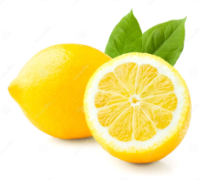  We commonly encounter acids and bases in our foods – some foods are acidic, and others are basic (alkaline). Acidic substances are usually identified by their sour taste. An acid is basically a molecule which can donate an H+ ion (proton), usually when dissolved in water.
We commonly encounter acids and bases in our foods – some foods are acidic, and others are basic (alkaline). Acidic substances are usually identified by their sour taste. An acid is basically a molecule which can donate an H+ ion (proton), usually when dissolved in water.For example, when added to water, strong acids will release all of their hydrogen ions, transforming the water into an acidic solution. Some common strong acids are hydrochloric acid HCl, nitric acid HNO3, and sulphuric acid H2SO4. Weak acids, like citric acid in lemons, on the other hand, only let go of some of their hydrogen ions, which makes for a less concentrated solution. So, the higher the concentration of hydrogen ions in water, the stronger the acid. Strong acids typically have pH levels of between 1-3, while weak acids will register in the 4-6 range on the pH scale. (A pH of 7 is neutral(. The pH scale, which runs from 0 to 14, is a measure of how many hydrogen ions are present in a water-based solution. Learn more about pH here. If we look at the formulas of different acids, we can see that they all contain at least one H (hydrogen) atom – for example: Acids and bases neutralize each other. Hydrochloric acid is found in the stomach, and helps with digestion. Excess hydrochloric acid may cause acid burns (ulcers); antacids like milk of magnesia are bases that help by neutralizing excess acid in the stomach. Some acids: Hydrofluoric | Nitric | Oxalic | Phosphoric | Sulphuric |